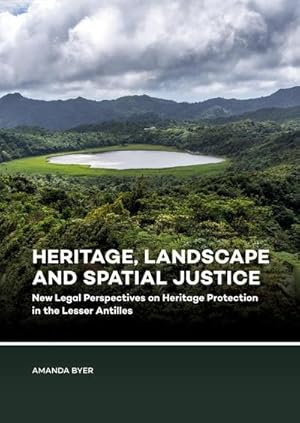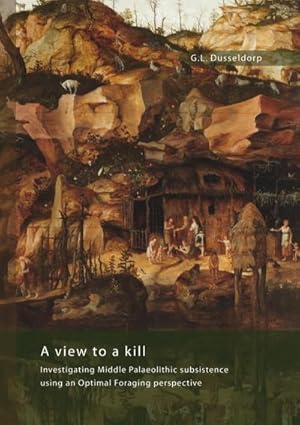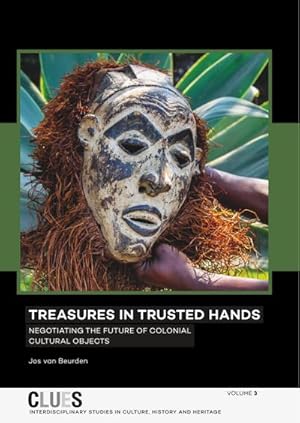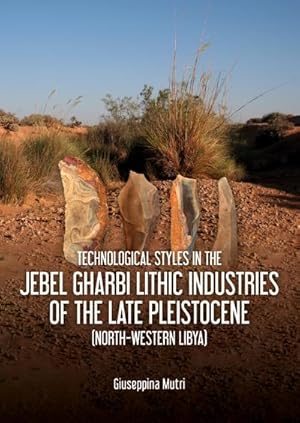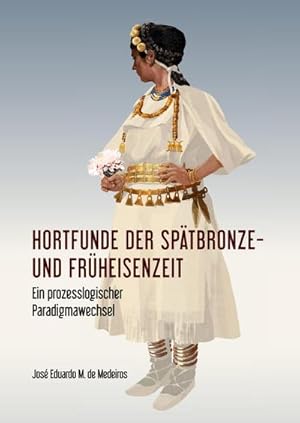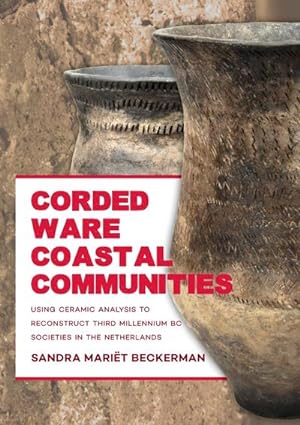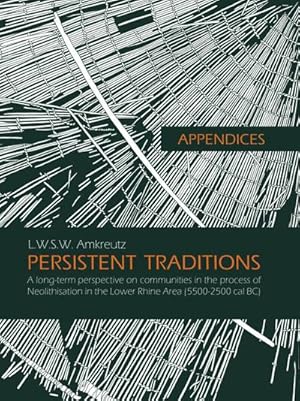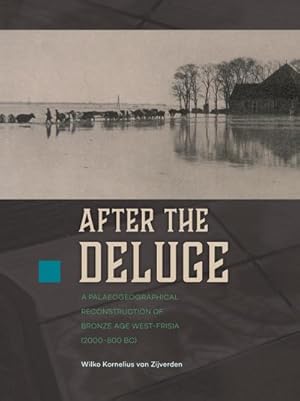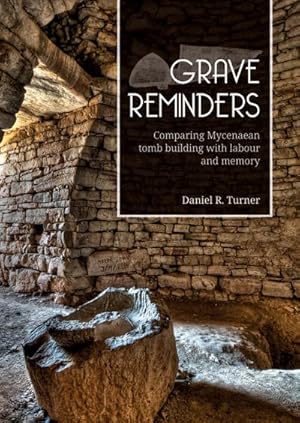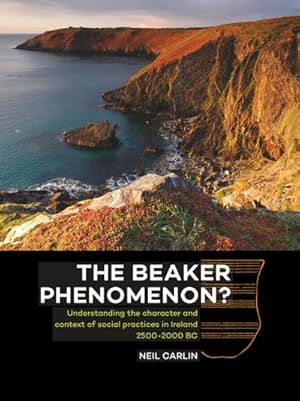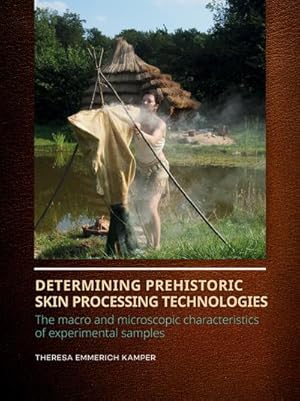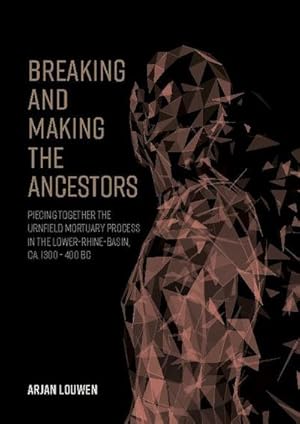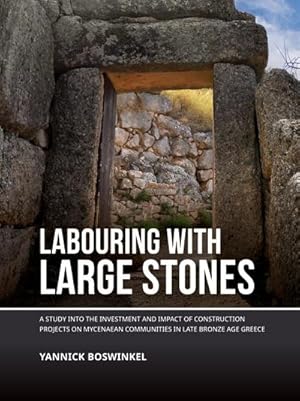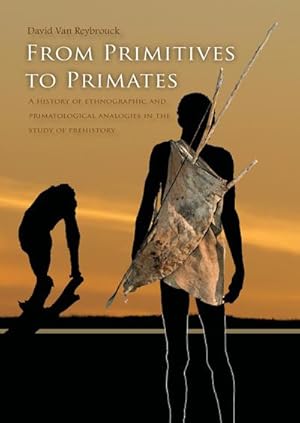sidestone press dissertations (349 results)
Product Type
- All Product Types
- Books (349)
- Magazines & Periodicals
- Comics
- Sheet Music
- Art, Prints & Posters
- Photographs
- Maps
-
Manuscripts &
Paper Collectibles
Condition
Binding
Collectible Attributes
- First Edition (91)
- Signed
- Dust Jacket
- Seller-Supplied Images (346)
- Not Printed On Demand (94)
Seller Location
Seller Rating
-
Heritage, Landscape and Spatial Justice
Published by Sidestone Press Dissertations Okt 2022, 2022
ISBN 10: 9464280395ISBN 13: 9789464280395
Seller: BuchWeltWeit Ludwig Meier e.K., Bergisch Gladbach, Germany
Book Print on Demand
Taschenbuch. Condition: Neu. This item is printed on demand - it takes 3-4 days longer - Neuware -The Caribbean region faces particular environmental challenges as a result of colonial land use, pressures from tourism and globalisation, as well as climate change. No less affected are its heritage resources, which include natural and cultural elements crucial to economic survival and local identity. This research explores the relationship between land, law and heritage in order to better understand the regulatory failures that undermine heritage protection in the English-speaking Caribbean.Using a spatial justice lens to examine the legal framework of eight islands in the Lesser Antilles, the analysis posits that domestic heritage laws are ineffective, because they ignore the relevance of local places or landscapes to the formation of heritage. Relying instead on ideas of land as abstract property rights, heritage is presented as a mere visual embellishment that can deteriorate into an unsightly and costly burden for the landowner or State, rather than the outcome of dynamic and locally unique interactions between people and place.While domestic laws continue to classify heritage as objects, sites and buildings with fixed aesthetic value, international law has adopted a more progressive stance, placing community relationships with landscape at the heart of heritage protection strategies. Empowering communities to contest unsustainable treatment of the landscape can potentially lead to the recognition of the value of landscape integrity to sustainable heritage, and influence change at the national level.Integrating landscape considerations into the legal framework can make law more responsive to the nuances and limits of the local cultural and natural environment. These dynamic landscape processes are also relevant to debates concerning climate change, ecosystem degradation, access to public spaces and environmental human rights. As such, this work should be of interest to legal practitioners in heritage and environmental law, planners, geographers and other academia exploring socio-legal approaches to sustainable development. 216 pp. Englisch.
More buying choices from other sellers on AbeBooks
New offers from US$ 33.11
-
A view to a kill
Published by Sidestone Press Dissertations Jan 2009, 2009
ISBN 10: 9088900205ISBN 13: 9789088900204
Seller: BuchWeltWeit Ludwig Meier e.K., Bergisch Gladbach, Germany
Book Print on Demand
Taschenbuch. Condition: Neu. This item is printed on demand - it takes 3-4 days longer - Neuware -The sophistication of Neanderthal behavioural strategies have been the subject of debate from the moment of their recognition as a separate species of hominin in 1856. This book presents a study on Neanderthal foraging prowess. Novel ethnographic and primatological insights, suggest that increasing dependence on high quality foods, such as meat, caused the brain to evolve to a large size and thus led to highly intelligent hominins. From this baseline, the author studies the Neanderthal archaeological record in order to gain insight into the 'knowledge-intensity' of Neanderthal hunting behaviour.In this research, an optimal foraging perspective is applied to Pleistocene bone assemblages. According to this perspective, foraging success is an important factor in an individual's evolutionary fitness. Therefore foraging is organised as efficiently as possible. The prey species that were selected and hunted by Neanderthals are analysed. The author investigates economic considerations that influenced Neanderthal prey choice. These considerations are based on estimates of the population densities of the available prey species and on estimates of the relative difficulty of hunting those species. The results demonstrate that when Neanderthals operated within poor environments, their prey choice was constrained: they were not able to hunt species living in large herds. In these environments, solitary species were the preferred prey. It is striking that Neanderthals successfully focussed on the largest and most dangerous species in poor environments. However, in richer environments, these constraints were lifted and species living in herds were successfully exploited.In order to assess the accuracy of this approach, bone assemblages formed by cave hyenas are also analysed. The combined results of the Neanderthal and hyena analyses show that an optimal foraging perspective provides a powerful tool to increase our understanding of Pleistocene ecology. The niches of two social carnivores of similar size, which were seemingly similar, are successfully distinguished. This result lends extra credence to the conclusions regarding Neanderthal foraging strategies.This book contributes to the debate surrounding Neanderthal competence and ability. It combines an up-to-date review of current knowledge on Neanderthal biology and archaeology, with novel approaches to the archaeological record. It is thus an important contribution to the current knowledge of this enigmatic species. 200 pp. Englisch.
More buying choices from other sellers on AbeBooks
New offers from US$ 33.11
-
Exploring human nature
Published by Sidestone Press Dissertations Apr 2018, 2018
ISBN 10: 9088905584ISBN 13: 9789088905582
Seller: BuchWeltWeit Ludwig Meier e.K., Bergisch Gladbach, Germany
Book Print on Demand
Taschenbuch. Condition: Neu. This item is printed on demand - it takes 3-4 days longer - Neuware -Exploring human nature takes the reader deep into the human experience of being in nature. Our current ecological predicament highlights the need to change people's nature awareness and behaviour. This pioneering mixed methods study investigates a method to do this through facilitated Solo time in the wilderness. Solo time is an ancient, ritualised and pan-cultural practice of spending time alone in nature, that has been reintroduced into our current time and culture. The study focuses on the phenomenology of young adults' immersive experiences in nature and the evaluation of long term impact on their personal development, their relationship with nature, community participation and ecological behaviour. However, this work is not only about the content of research, it is also about how research is done. On a methodological level the study takes a systemic approach: it explores and integrates an expanded, interconnected worldview and methodology. In practice, this encompasses working with participants' dreams as data and including different ways of knowing in an expanded view on validity. It also includes collecting data on the researcher's own experience and integrating it as a parallel narrative in the thesis.In this manner the book not only tackles the pressing issue of an increasing psychological and physical separation between humans and nature. It also calls into question how conventional research and its prevailing tendency to investigate the world in isolated pieces may contribute to the problem. Overall, this book provides a practical example of how a systemic approach may be integrated in the research process and in academic writing. It also serves as a valuable reference point for future work on promising triggers for change and highlights powerful elements for prospective programmes focussing on individual empowerment, sustainability and nature awareness. It addresses all researchers interested in ecopsychology and experiential education but also those who are curious to explore subjectivity as part of an expanded worldview and methodology in research. Contents:AcknowledgementsContentsList Of TablesList Of Figures1 Introduction2 The Human-Nature Relationship Through The Lens Of Contemporary Science3 The Human-Nature Relationship Through The Lens Of An Expanded Worldview4 Mixed Methods Enquiry Of Immersive Experiences In Wild Nature5 Intuitive Dream Enquiry6 Overall Discussion7 ConclusionReferencesAppendices 274 pp. Englisch.
More buying choices from other sellers on AbeBooks
New offers from US$ 38.63
-
Treasures in Trusted Hands
Published by Sidestone Press Dissertations Mai 2017, 2017
ISBN 10: 9088904391ISBN 13: 9789088904394
Seller: BuchWeltWeit Ludwig Meier e.K., Bergisch Gladbach, Germany
Book Print on Demand
Taschenbuch. Condition: Neu. This item is printed on demand - it takes 3-4 days longer - Neuware -This pioneering study charts the one-way traffic of cultural and historical objects during five centuries of European colonialism. It presents abundant examples of disappeared colonial objects and systematises these into war booty, confiscations by missionaries and contestable acquisitions by private persons and other categories. Former colonies consider this as a historical injustice that has not been undone.Former colonial powers have kept most of the objects in their custody. In the 1970s the Netherlands and Belgium returned objects to their former colonies Indonesia and DR Congo; but their number was considerably smaller than what had been asked for. Nigeria's requests for the return of some Benin objects, confiscated by British soldiers in 1897, are rejected.As there is no consensus on how to deal with colonial objects, disputes about other categories of contestable objects are analysed. For Nazi-looted art-works, the 1998 Washington Conference Principles have been widely accepted. Although non-binding, they promote fair and just solutions and help people to reclaim art works that they lost involuntarily.To promote solutions for colonial objects, Principles for Dealing with Colonial Cultural and Historical Objects are presented, based on the 1998 Washington Conference Principles on Nazi-Confiscated Art. They are part of a model to facilitate mediation in disputes about them. Europe, the former colonisers, should do more pro-active provenance research into the acquisitions from the colonial era, both in public institutions and private collections.'This is a very commendable treatise which has painstakingly and with detachment explored the emotive issue of the return of cultural objects removed in colonial times to the metropolis. He has looked at the issues from every continent with clarity and perspicuity.'Prof. Folarin Shyllon (University of Ibadan)'A monumental work of high quality. The Chapter on Congo is particularly well documented and instructive.'Dr. Guido Gryseels (Director-General of the Royal Museum for Central Africa in Tervuren)CLUES is an international scientific series covering research in the field of culture, history and heritage which have been written by, or were performed under the supervision of members of the research institute CLUE+.ContentsPart I: IntroductionChapter 1: A neglected issue in an evolving worldChapter 2: On colonial cultural objectsPart II: Colonialism and cultural objectsChapter 3: Colonial expansionChapter 4: Settler and exploitation colonialismChapter 5: Decolonisation, the first claims and the ongoing seepage of objectsPart III: Colonial cultural objects and the lawChapter 6: Increasing protection Part IV: Ambiguities between the Netherlands and IndonesiaChapter 7: The 1975 Joint RecommendationsChapter 8: New insights into the Joint RecommendationsPart V: Approaches in other bilateral agreementsChapter 9: The 1970 agreement between Belgium and CongoChapter 10: Nordic model for Denmark, Iceland and Greenland Chapter 11: Melanesian model for Australia and Papua New Guinea Chapter 12.: The Benin Dialogue (2010 - .)Part VI: New insights, a new approachChapter 13: The neglected effect of colonialismChapter 14: A new commitment and a new approach 292 pp. Englisch.
More buying choices from other sellers on AbeBooks
New offers from US$ 38.63
-
Challenging climate change
Published by Sidestone Press Dissertations Jan 2009, 2009
ISBN 10: 9088900310ISBN 13: 9789088900310
Seller: BuchWeltWeit Ludwig Meier e.K., Bergisch Gladbach, Germany
Book Print on Demand
Taschenbuch. Condition: Neu. This item is printed on demand - it takes 3-4 days longer - Neuware -Throughout history, climate change has been an important driving force behind human behaviour. This archaeological study seeks to understand the complex interrelations between that behaviour and climatic fluctuations, focussing on how climate affected the social relations between neighbouring communities of occasionally differing nature. It is argued that developments in these relations will fall within a continuum between competition on one end and cooperation on the other. The adoption of a particular strategy depends on whether that strategy is advantageous to a community in terms of the maintenance of its well-being when faced with adverse climate change. This model will be applied to northern Mesopotamia between 3000 and 1600 bc. Local palaeoclimate proxy records demonstrate that aridity increased significantly during this period. Within this geographical, chronological, and climatic framework, this study looks at changes in settlement patterns as an indication of competition among sedentary agriculturalist communities, and the development of the Amorite ethnic identity as reflecting cooperation among sedentary and more mobile pastoralist communities. 200 pp. Englisch.
More buying choices from other sellers on AbeBooks
New offers from US$ 38.63
-
Breaking with Tradition
Published by Sidestone Press Dissertations Okt 2014, 2014
ISBN 10: 9088902755ISBN 13: 9789088902758
Seller: BuchWeltWeit Ludwig Meier e.K., Bergisch Gladbach, Germany
Book Print on Demand
Taschenbuch. Condition: Neu. This item is printed on demand - it takes 3-4 days longer - Neuware -Over 150 years of research in the Circum-Alpine region have produced a vast amount of data on the lakeshore and wetland settlements found throughout the area. Particularly in the northern region, dendrochronological studies have provided highly accurate sequences of occupation, which have correlated, in turn, to palaeoclimatic reconstructions in the area. The result has been the general conclusion that the lake-dwelling tradition was governed by climatic factors, with communities abandoning the lakeshore during periods of inclement conditions, and returning when the climate was more favourable. Such a cyclical pattern occurred from the 4th millennium BC to 800 BC, at which time the lakeshores were abandoned and never extensively re-occupied. Was this final break with a long-lasting tradition solely the result of climatic fluctuation, or were cultural factors a more decisive influence for the decline of lake-dwelling occupation Studies of material culture have shown that some of the Late Bronze Age lake-dwellings in the northern Alpine region were significant centres for the production and exchange of bronzework and manufactured products, linking northern Europe to the southern Alpine forelands and beyond. However, during the early Iron Age the former lake-dwelling region does not show such high levels of incorporation to long-distance exchange systems. Combining the evidence of material culture studies with occupation patterns and burial practices, this volume proposes an alternative to the climatically-driven models of lake-dwelling abandonment. This is not to say that climate change did not influence those communities, but that it was only one factor among many. More significantly, it was a combination of social choice to abandon the shore, and subsequent cultural developments that inhibited the full scale reoccupation of the lakes. 206 pp. Englisch.
More buying choices from other sellers on AbeBooks
New offers from US$ 38.63
-
Animals in Saxon and Scandinavian England
Published by Sidestone Press Dissertations Jul 2014, 2014
ISBN 10: 9088902666ISBN 13: 9789088902666
Seller: BuchWeltWeit Ludwig Meier e.K., Bergisch Gladbach, Germany
Book Print on Demand
Taschenbuch. Condition: Neu. This item is printed on demand - it takes 3-4 days longer - Neuware -In this book an analysis of over 300 animal bone assemblages from English Saxon and Scandinavian sites is presented. The data set is summarised in extensive tables for use as comparanda for future archaeozoological studies. Animals in Saxon and Scandinavian England takes as its core four broad areas of analysis. The first is an investigation of the diet of the population, and how food was used to establish social boundaries. Increasingly diverse diets are recognised, with high-status populations distinguishing themselves from other social sectors through the way food was redistributed and the diversity of taxa consumed. Secondly, the role of animals in the economy is considered, looking at how animal husbandry feeds into underlying modes of production throughout the Saxon period. From the largely self-sufficient early Saxon phase animal husbandry becomes more specialised to supply increasingly urban settlements. The ensuing third deliberation takes into account the foodways and interactions between producer and consumer sites, considering the distribution of food and raw materials between farm, table and craft worker. Fundamental changes in the nature of the Saxon economy distinguish a move away from food renders in the middle Saxon phase to market-based provisioning; opening the way for greater autonomy of supply and demand. Finally, the role of wics and burhs as centres of production is investigated, particularly the organisation of manufacture and provisioning with raw materials. 222 pp. Englisch.
More buying choices from other sellers on AbeBooks
New offers from US$ 44.14
-
The Connected Caribbean
Published by Sidestone Press Dissertations Mai 2014, 2014
ISBN 10: 9088902593ISBN 13: 9789088902598
Seller: BuchWeltWeit Ludwig Meier e.K., Bergisch Gladbach, Germany
Book Print on Demand
Taschenbuch. Condition: Neu. This item is printed on demand - it takes 3-4 days longer - Neuware -The modern-day Caribbean is a stunningly diverse but also intricately interconnected geo-cultural region, resulting partly from the islands' shared colonial histories and an increasingly globalizing economy. Perhaps more importantly, before the encounter between the New and Old World took place, the indigenous societies and cultures of the pre-colonial Caribbean were already united in diversity. This work seeks to study the patterns of this pre-colonial homogeneity and diversity and uncover some of their underlying processes and dynamics. In contrast to earlier studies of its kind, this study adopts an archaeological network approach, in part derived from the network sciences. In archaeology, network approaches can be used to explore the complex relations between objects, sites or other archaeological features, and as such represents a powerful new tool for studying material culture systems. Archaeological research in general aims to uncover the social relations and human interactions underlying these material culture systems. Therefore, the interdependencies between social networks and material culture systems are another major focus of this study. This approach and theoretical framework is tested in four case studies dealing with lithic distribution networks, site assemblages as ego-networks, indigenous political networks, and the analysis of artefact styles in 2-mode networks. These were selected for their pertinence to key research themes in Caribbean archaeology, in particular the current debates about the nature of ties and interactions between culturally different communities in the region, and the structure and dynamics of pre-colonial socio-political organisation. The outcomes of these case studies show that archaeological network approaches can provide surprising new insights into longstanding questions about the patterns of pre-colonial connectivity in the region. 328 pp. Englisch.
More buying choices from other sellers on AbeBooks
New offers from US$ 44.14
-
Blood is thicker than water
Published by Sidestone Press Dissertations Jul 2011, 2011
ISBN 10: 908890071XISBN 13: 9789088900716
Seller: BuchWeltWeit Ludwig Meier e.K., Bergisch Gladbach, Germany
Book Print on Demand
Taschenbuch. Condition: Neu. This item is printed on demand - it takes 3-4 days longer - Neuware -This study represents a contribution to the pre-Colonial archaeology of the Windward Islands in the Caribbean. The research aimed to determine how the Ceramic Age (ca. 400 BC - AD 1492) Amerindian inhabitants of the region related to one another and others at various geographic scales, with a view to better understanding social interaction and organization within the Windward Islands as well the integration of this region within the macro-region. An island-by-island study of some 640 archaeological sites and their ceramic assemblages provided insight into settlement sequences, patterns and micro-mobility through time, besides highlighting various configurations of sites spread across different islands that were united by shared ceramic (decorative) traits. By extending the comparative scope of this research, possible material cultural influences from more distant regions could be suggested. While Windward Island communities certainly developed a localized material cultural identity, they remained open to a host of wide-ranging influences outside the Windward Island micro-region, flexibly realigning themselves particularly with numerous mainland South American communities in Late Ceramic Age times (ca. AD 700-1500). 306 pp. Englisch.
More buying choices from other sellers on AbeBooks
New offers from US$ 44.14
-
Hispaniola - Hell or Home?
Published by Sidestone Press Dissertations Jan 1970, 1970
ISBN 10: 9088908516ISBN 13: 9789088908514
Seller: BuchWeltWeit Ludwig Meier e.K., Bergisch Gladbach, Germany
Book Print on Demand
Taschenbuch. Condition: Neu. This item is printed on demand - it takes 3-4 days longer - Neuware -Grand Narratives of colonization, especially ones related to the Spanish and Portuguese Americas, began circulating soon after 1492. The danger of these Grand Narratives is that they are often mistaken as reality and eclipse all other possible narrations pertaining to a particular place and/or time. As more Caribbean territories become independent, the questioning of Grand Narratives has permeated many disciplines in the region, and archaeology is no exception.This work attempts to examine the lifeways at the archaeological site of Concepción de la Vega during its occupation from 1494 through 1564, using a Decolonial approach. Situated in present-day Dominican Republic (Hispaniola island), this site was one of the earliest and most affluent in Caribbean colonial history.The Decolonial approach used here critically analyzes and reinterprets primary data about Concepción from the point of view of those colonized, particularly non-elite, Indigenous peoples, and those of African descent. This approach uses various sources of data to recreate early lifeways, and helps gain a better understanding of the process through which the Spanish-American cultural tradition was created, and later disseminated, to the rest of Latin America.Contents1 INTRODUCTION2 THEORY AND METHODOLOGY3 ARCHAEOLOGY OF ARCHAEOLOGY: CHRONOLOGY OF ARCHAEOLOGICAL INTERVENTIONS AT CONCEPCIÓN DE LA VEGA4 HISTORY OF HISTORY: PARTIAL CHRONOLOGY OF MILITARY, POLITICAL AND DIPLOMATIC EVENTS AFFECTING INTERACTIONS AT CONCEPCIÓN DE LA VEGA (1494-1564)5 HISTORY AS A PROCESS: SOCIOCULTURAL AND BIOPHYSICAL INTERACTIONS AT CONCEPCIÓN DE LA VEGA IN NON-DOMESTIC SPACES (1494-1564)6 ARCHAEOLOGICAL ANALYSIS OF ARTIFACTS, ARTIFACT USE AND DISTRIBUTION PATTERNS7 INTERPRETATION AND COMPARISON8 CONCLUSIONS AND RECOMMENDATIONS FOR FUTURE RESEARCH 256 pp. Englisch.
More buying choices from other sellers on AbeBooks
New offers from US$ 44.14
-
Technological Styles in the Jebel Gharbi Lithic Industries of the Late Pleistocene (North-Western Libya)
Published by Sidestone Press Dissertations Sep 2022, 2022
ISBN 10: 9464280271ISBN 13: 9789464280272
Seller: BuchWeltWeit Ludwig Meier e.K., Bergisch Gladbach, Germany
Book Print on Demand
Taschenbuch. Condition: Neu. This item is printed on demand - it takes 3-4 days longer - Neuware -The study of the human societies of the Final Pleistocene of North Africa requires an in-depth analysis of the techno-typological characteristics of the microlithic industries that were widespread in the whole Mediterranean area during the period between 24000 and 10000 years ago.Most of the research projects in Maghreb and Libya were carried out decades ago. At the time sediments were rarely sieved and the small lithic tools, so characteristic of this period, were often lost. Also, little attention was paid to the raw material sourcing, which is an exceptional tool for understanding technology, human behavior and land management. It is thus of great importance to focus on new research, that has the potential to delineate a more detailed picture of the North-African Later Stone Age.Based on more recent research in the Jebel Gharbi (Libya), this book offers a high-resolution description and documentation of the LSA lithic complexes of North-Western Libya, applying an approach that integrates up-to-date techno-typological studies with geochemistry and functional analysis. This research aims to define the characteristics of the human occupation of the Jebel Gharbi during the Late Pleistocene, with specific reference to the period from the Last Glacial Maximum to the Holocene transition, delineating a picture of the human occupation of the area through about ten millennia. This volume represents an exhaustive overview on the Prehistory of Northern Libya in areas that aren't, nowadays, accessible to researchers.ContentsIntroductionChapter 1: Hunter-Gatherer societies in the north african context: History of studies, definitions, chronology.Chapter 2 : Jebel Gharbi, environment and culturesChapter 3: From the artifact to society: lithic industries, study methods used. Archaeometry, techno-typological analysis, functional analysis and experimentationChapter 4: Raw material: distribution, analysis and characteristics of flint outcrops in Jebel Gharbi.Chapter 5: The study sample in the Shakshuk and Wadi Ghan areas.Chapter 6. From the industry to the site. Techno-functional experimental study of lithic artefacts.Conclusion: The Jebel Gharbi sequence in the framework of hunter-gatherer societies in North Western Africa.Final Remarks 196 pp. Englisch.
More buying choices from other sellers on AbeBooks
New offers from US$ 44.14
-
Stories of the Past
Published by Sidestone Press Dissertations Sep 2022, 2022
ISBN 10: 9464280336ISBN 13: 9789464280333
Seller: BuchWeltWeit Ludwig Meier e.K., Bergisch Gladbach, Germany
Book Print on Demand
Taschenbuch. Condition: Neu. This item is printed on demand - it takes 3-4 days longer - Neuware -This study contends that the creation and consumption of fiction has not been looked at in a holistic way in terms of an overall process that takes us from author to consumer with all of the potential intermediate steps. It proposes and describes just such a process model, which begins with the author, who interacts with elements of his or her contemporary world and incorporates them into the imagined world of the novel. It describes how at each stage in the process other actors engage with the novel in various forms, and create artefacts such as critical reviews, filmed adaptations and tourist interpretations that comprise further imagined worlds that can be compared to the author's original imagined world, and by extension, the original past world.Using a number of case studies of English novels of the period from 1800 to 1930, the study looks at what evidence of the process in action tells us about the ability of a novel to act as an adjunct to contemporary records in providing insights into that original real world. These studies incorporate analyses of the novels themselves, and of subsequent artefacts such as film and television adaptations, curated literary places and guid Elektronisches Buch, and reviews. The study concludes that fiction in its various forms, and especially in its adapted and interpreted forms, whilst not a pure historical document as such, can provide us with a vivid image of a past world. It contends that the process model could be used as an aid in the teaching of History or English Literature, or as an aid to the general reader, to help remove the layers of imagined worlds that potentially lie between us and a past historical world, thereby reducing the ability of that layering to create a misleading view of history.Contents1 Introduction2 The Literary Tourism Process3 The Adaptation Process4 The Critical Process5 The Writing Process6 J.B. Priestley's The Good Companions - Discerning History7 Stories of the Past: Conclusions 228 pp. Englisch.
More buying choices from other sellers on AbeBooks
New offers from US$ 44.14
-
Navigating with White-Faced Capuchin Monkeys
Published by Sidestone Press Dissertations Sep 2023, 2023
ISBN 10: 9464280573ISBN 13: 9789464280579
Seller: BuchWeltWeit Ludwig Meier e.K., Bergisch Gladbach, Germany
Book Print on Demand
Taschenbuch. Condition: Neu. This item is printed on demand - it takes 3-4 days longer - Neuware -This monograph examines a set of questions concerning human and nonhuman primate cognition, spatial memory, foraging behavior, and the ability of monkeys to form mental maps of the location and distribution of feeding and resting sites.Two primary forms of spatial memory have been hypothesized for primates. First, it has been suggested that primates might represent spatial memory in the form of a coordinate-based (geometric) map in which points in the landscape are stored as true coordinates and individuals calculate precise angles and distances between targets. Alternatively, it has been suggested that primates may internally represent spatial information as a route-based (topological) map in which individuals use and reuse a set of common pathways and a select number of landmarks to reach a large number of targets.This research examines questions of behavior and cognition in wild white-faced capuchins (Cebus imitator) in northeastern Costa Rica. First, a natural field study or behavioral-ecological study was carried out in which the diet, foraging behavior, activity budget, natural decision-making, and movement patterns of wild capuchins were documented. Secondly, an experimental field study was performed by placing feeding platforms in the forest to determine how capuchins integrate the spatial location of these new feeding sites into an internal representation and the degree to which travel routes are most consistent with a coordinate-based or a route-based spatial representation.A major goal of this research is to develop an understanding of the challenges primates naturally face in locating resources that vary in time and space, and to identify the set of features that may have played a fundamental role in shaping the evolution of decision-making and spatial abilities in humans. In conclusion, the results suggest that capuchins use a route-based spatial representation in large-scale space and provide some evidence of a coordinate-based spatial representation in small-scale space. 172 pp. Englisch.
More buying choices from other sellers on AbeBooks
New offers from US$ 44.14
-
Hortfunde der Spätbronze- und Früheisenzeit
Published by Sidestone Press Dissertations, 2021
ISBN 10: 9464280069ISBN 13: 9789464280067
Seller: AHA-BUCH GmbH, Einbeck, Germany
Book Print on Demand
Taschenbuch. Condition: Neu. nach der Bestellung gedruckt Neuware - Printed after ordering - In dieser Dissertation hat José Eduardo M. de Medeiros einen neuen theoretischen Ansatz mit der Untersuchung konkreter Probleme in der Bronze- und Eisenzeitforschung Mitteleuropas in Einklang gebracht. Das ursprüngliche Ziel war die Untersuchung der Schmuckhorte der Spätbronzezeit in Frankreich. Aber eine anfängliche Beschäftigung mit der Literatur zu den Hortfunden der Spätbronze- und Früheisenzeit führte zu der Einsicht, dass die Grundlagen prähistorischer Interpretation einer kritischen Revision bedurften.Die angebotene Reflexion ist eng mit einer soziologischen Kulturtheorie verknüpft, die eine kritische Sicht darauf miteinbezieht, wie Menschen Objekte und Ereignisse in der Welt erklären. Es gibt einen revolutionären Wechsel zwischen vormodernen (handlungs- und substanzlogischen) und modernen (prozessualen) Erklärungen, und es war Medeiros' Aufgabe, die Folgen dieses Paradigmenwechsels für die archäologische Forschung zu verstehen.Da diese Einsichten zu einer Relativierung der Niederlegungsabsichten als heuristisches Werkzeug führen und die Niederlegungsabsicht weiterhin als ein wichtiges Instrument für die Kategorisierung von Hortfunden dient, handelt es sich um Konsequenzen für die archäologische Interpretation im Allgemeinen und für die Deutung der Hortfunde der Spätbronze- und Früheisenzeit im Speziellen.Die Arbeit zeigt, dass Schmuck-, Gefäß- und Waffenhorte verschiedene Arten von Deponierungen darstellen und dass, wenn diese Depots im religiösen Kontext der Zeit betrachtet werden, Schmuck und Gefäße die gleiche Bedeutung wie Waffen tragen. Dies steht im Widerspruch zu einer gängigen Auffassung der Spätbronze- und Früheisenzeit, welche die Krieger und ihre Waffen in den Vordergrund stellt.Der Autor zeigt, dass dies eine kulturell konstruierte, 'männliche' Voreingenommenheit ist, die psychologische und soziologische Ursachen hat. Schließlich bietet dieses Buch einen rekonstruktiven Ansatz an, der die kulturelle Bedeutung der Schmuckhorte aufklärt.ContentsVorwort1 Einleitung2 Paradigmenwechsel in den Geisteswissenschaften3 Die ästhetische Verfasstheit der Lebenswelt4 Symbolismus in der Urgeschichte5 Ein Fundbild der spätbronzezeitlichen Hortfunde6 Fazit7. Literaturverzeichnis.
-
Deciding about Design Quality
Published by Sidestone Press Dissertations Jan 2010, 2010
ISBN 10: 9088900531ISBN 13: 9789088900532
Seller: BuchWeltWeit Ludwig Meier e.K., Bergisch Gladbach, Germany
Book Print on Demand
Taschenbuch. Condition: Neu. This item is printed on demand - it takes 3-4 days longer - Neuware -In the past few years the image of tender procedures in which Dutch public clients selected an architect has been dominated by distressing newspaper headlines. Architects fear that the current tender culture will harm the quality of our built environment due to a potential lack of diversity, creativity and innovation in architectural design. Clients often allow legal requirements to overrule their actual wishes. The current practice of architect selection by European public clients has its roots in three distinct systems: 1) tendering for services and works, 2) the selective search to identify a suitable architect or design team, and 3) the architectural competition. It is these diverse roots of the selection process that appear to cause conflicts between the legal rationality of procurement and the psychological rationality of public decision making. This PhD research addresses the origin of these problems as currently experienced by public commissioning clients in architect selection and proposes pragmatic implications for future practice. It is therefore of interest for commissioning clients, management consultants, policy makers and legal advisors but also for designers and researchers in the field of architecture and decision making. Based on four empirical cases the author shows that during architect selection the rational legal requirements clash with the psychological process of decision making. Decision makers only start to make sense of the proposed designs once they are confronted with the alternatives. It is therefore almost impossible for clients to design a selection procedure and announce the criteria and weighing factors up front, as required by procurement law. The scientific underpinning of the findings is found in four theoretical perspectives on value judgements in design and the latest decision theories in which emotion, intuition, and expertise play prominent roles. In the conclusions five sensemaking processes are distinguished and several underlying situational characteristics are identified that influence the selection process, such as complexity, uncertainty and decision support. The thesis proposes fifteen factors for a successful design of a tender procedure to select an architect. It also offers recommendations for change of the current Dutch practice. 338 pp. Englisch.
More buying choices from other sellers on AbeBooks
New offers from US$ 49.66
-
Fragmenting the Chieftain
Published by Sidestone Press Dissertations Dez 2017, 2017
ISBN 10: 9088905118ISBN 13: 9789088905117
Seller: BuchWeltWeit Ludwig Meier e.K., Bergisch Gladbach, Germany
Book Print on Demand
Taschenbuch. Condition: Neu. This item is printed on demand - it takes 3-4 days longer - Neuware -There is a cluster of Early Iron Age (800-500 BC) elite burials in the Low Countries in which bronze vessels, weaponry, horse-gear and wagons were interred as grave goods. Mostly imports from Central Europe, these objects are found brought together in varying configurations in cremation burials generally known as chieftains' graves or princely burials. In terms of grave goods they resemble the Fürstengräber of the Hallstatt Culture of Central Europe, with famous Dutch and Belgian examples being the Chieftain's grave of Oss, the wagon-grave of Wijchen and the elite cemetery of Court-St-Etienne.Fragmenting the Chieftain presents the results of an in-depth and practice-based archaeological analysis of the Dutch and Belgian elite graves and the burial practice through which they were created. It was established that the elite burials are embedded in the local burial practices - as reflected by the use of the cremation rite, the bending and breaking of grave goods, and the pars pro toto deposition of human remains and objects, all in accordance with the dominant local urnfield burial practice. It appears that those individuals interred with wagons and related items warranted a more elaborate funerary rite, most likely because these ceremonial and cosmologically charged vehicles marked their owners out as exceptional individuals. Furthermore, in a few graves the configuration of the grave good set, the use of textiles to wrap grave goods and the dead and the reuse of burial mounds show the influence of individuals familiar with Hallstatt Culture burial customs.A comprehensive overview of the Dutch and Belgian graves can be found in the accompanying Fragmenting the Chieftain - Catalogue. Late Bronze and Early Iron Age elite burials in the Low Countries (separate publication).Contents1 Introduction2 Theoretical framework: identifying elites and their graves3 Dating elite burials4 The elite burials: presenting the dataset5 The (development of the) elite burial practice6 How grave goods were used and interpreted7 Conclusion8 Final reflections and questions for the futureSummary (English and Dutch)AcknowledgementsBibliographyCurriculum vitaeApp. A1 AbbreviationsApp.A2 Summary overview of objects in Catalogue, per find category 234 pp. Englisch.
More buying choices from other sellers on AbeBooks
New offers from US$ 49.66
-
Renewing the house
Published by Sidestone Press Dissertations Jan 2010, 2010
ISBN 10: 9088900450ISBN 13: 9789088900457
Seller: BuchWeltWeit Ludwig Meier e.K., Bergisch Gladbach, Germany
Book Print on Demand
Taschenbuch. Condition: Neu. This item is printed on demand - it takes 3-4 days longer - Neuware -This study is a contribution to the household archaeology of the Caribbean. The aim of the research was to come to a material definition of the precolonial house, rather than rely on the few, short, Spanish colonial descriptions. Archaeological research from the indigenous Taíno site of El Cabo in the Dominican Republic is presented and seven centuries of community history from development and growth, to eventual demise after European contact is narrated through the dominant structure, the house. The interpretation of over 2000 domestic features, associated artefact assemblages and the spatial organization of the settlement between ca. AD 800 and 1504 is described in detail. No archaeological house plans have previously been published for precolonial Hispaniola. The data from El Cabo tips the scales the other way, contributing to a history of indigenous life through the study of the native house and its diachronic materialization - the House Trajectory. 370 pp. Englisch.
More buying choices from other sellers on AbeBooks
New offers from US$ 49.66
-
Corded Ware Coastal Communities
Published by Sidestone Press Dissertations Jun 2015, 2015
ISBN 10: 9088903182ISBN 13: 9789088903182
Seller: BuchWeltWeit Ludwig Meier e.K., Bergisch Gladbach, Germany
Book Print on Demand
Taschenbuch. Condition: Neu. This item is printed on demand - it takes 3-4 days longer - Neuware -The Corded Ware Culture (c. 2900-2300 BC) is found in a large area, from Russia to the Netherlands and from Scandinavia to Switzerland. Supra-regional elements include beakers decorated with cord and/or spatula imprints, battle-axes, and a funerary customs involving crouched inhumations under barrows with gender-specific placement of the body gender-specific funerary gifts. Analysis of ceramics from well-preserved settlements from the Dutch coastal zone have provided very valuable new information on the Corded Ware chronology, social organisation, ideology, subsistence, and use of material culture. A critical review of the commonly applied chronological models shows that many of the underlying premises cannot be supported due to problems with (broad calibration and sample reliability of) 14C dates. This study shows that in the Neolithic Dutch coastal zone, the thin-walled ceramics reflect supra-regional (Corded Ware ) affiliations, whereas the medium-thick-walled and thick-walled ceramics reflect persistent regional (Vlaardingen) traditions. The beakers decorated with cord and spatula impressions were used primarily for cooking; indications for the often proposed use of alcohol (and associated rise of individualisation and elites) were not found. It is argued in this study that the Corded Ware Culture represents an economic alliance, a dynamic totality as well as a network linking regional groups - each with a distinct economic base, material culture and ideology. These communities all participated in a vast supra-regional network that was a platform for inter-community exchanges of goods, skills, ideas and possibly people. Affiliation to this supra-regional network was a vital aspect for all regional groups involved, and membership to it was expressed by using a set of common traits. Decorated thin-walled beakers act as symbols of these supra-regional networks and thus embody both functional and ideological roles. 312 pp. Englisch.
More buying choices from other sellers on AbeBooks
New offers from US$ 49.66
-
Appendices to Persistent Traditions
Published by Sidestone Press Dissertations Dez 2013, 2013
ISBN 10: 9088902119ISBN 13: 9789088902116
Seller: BuchWeltWeit Ludwig Meier e.K., Bergisch Gladbach, Germany
Book Print on Demand
Taschenbuch. Condition: Neu. This item is printed on demand - it takes 3-4 days longer - Neuware -The adoption of agriculture is one of the major developments in human history. Archaeological studies have demonstrated that the trajectories of Neolithisation in Northwest Europe were diverse. This book presents a study into the archaeology of the communities involved in the process of Neolithisation in the Lower Rhine Area (5500-2500 cal BC). It elucidates the role played by the indigenous communities in relation to their environmental context and in view of the changes that becoming Neolithic brought about. This volume contains the appendices to the thesis 'Persistent traditions. A long-term perspective on communities in the process of Neolithisation in the Lower Rhine Area (5500-2500 cal BC)' (ISBN 9789088902031). These constitute a comprehensive inventory of 159, mostly excavated, archaeological sites in the Lower Rhine Area for which general characteristics were recorded. Their analysis shows that the succession of Late Mesolithic, Swifterbant culture, Hazendonk group and Vlaardingen culture societies represents a continuous long-term tradition of inhabitation of the wetlands and wetland margins of this area, forming a culturally continuous record of communities in the transition to agriculture. The site catalogue forms both an overview of, and detailed introduction into, the site-based archaeology of this time frame. After demonstrating the diversity of the Mesolithic, the subsequent developments regarding Neolithisation are studied from an indigenous perspective. Foregrounding the relationship between local communities and the dynamic wetland landscape, the archaeological evidence regarding its regional inhabitation points to long-term flexible behaviour and pragmatic decisions being made. For the interpretation of Neolithisation this study offers a complementary approach to existing research. Instead of arguing for a short transition based on the economic importance of domesticates and cultigens at sites, the emphasis is placed on the persistent traditions of the communities involved. New elements, instead of bringing about radical changes, are shown to be attuned to existing hunter-gatherer practices. By documenting indications of the mentalité of the inhabitants of the wetlands, it is demonstrated that their mindset remained essentially 'Mesolithic' for millennia. 422 pp. Englisch.
More buying choices from other sellers on AbeBooks
New offers from US$ 49.66
-
After the deluge
Published by Sidestone Press Dissertations Feb 2017, 2017
ISBN 10: 9088904065ISBN 13: 9789088904066
Seller: BuchWeltWeit Ludwig Meier e.K., Bergisch Gladbach, Germany
Book Print on Demand
Taschenbuch. Condition: Neu. This item is printed on demand - it takes 3-4 days longer - Neuware -After World War II huge land consolidation projects measuring thousands of hectares were carried out in West-Frisia. Large scale excavations of Bronze Age settlement sites were carried out resulting in a convincing model for the Bronze Age habitation of West-Frisia. This model envisaged settlement sites situated on creek ridges in an open almost treeless landscape. After a sudden change in climate c. 800 cal BC parts of the landscape were inundated, peat bogs developed and West-Frisia was abandoned by man. It was widely believed that this densely inhabited Bronze Age landscape was almost completely destroyed during the land consolidation projects. At the start of this century, however, it turned out that well preserved Bronze Age settlement sites still exist in West-Frisia. These sites were not only well-preserved but also situated at unexpected locations. The excavation results also gave reason to think of the presence of woodlands and forests during the Bronze Age.This thesis tries to unite the excavation results from the period of land consolidation and those of the later development led projects. In this thesis the palaeogegraphy is described at three scale levels. West-Frisia, the land consolidation project of Westwoud and several settlement sites. Based on an analysis of excavation results and environmental proxy data, a new model for the development of the landscape and habitation of West-Frisia during the Bronze Age emerges. For the construction of the palaeogeographical maps of Westwoud, a new approach is used, based on, amongst others, macro botanical remains. The thesis concludes with an alternative strategy for the prospection of Bronze Age sites in West-Frisia. This thesis is of interest for anyone who is professionally interested in the habitation history of West-Frisia and people who are professionally engaged with palaeogeographical and vegetation reconstructions.Contents1. After the deluge: an introduction1.1. Project outlines1.2. Structure and development of the physical landscape between 2000 and 800 cal BC1.3. Site location preferences1.4. Restraints and opportunities of the environment1.5. For what use 2. The history of landscape research in West-Frisia2.1. Introduction2.2. Prelude2.3. Pioneers2.4. Land consolidation2.5. The palaeogeographical model2.6. The habitation model2.7. The palaeogeography of the Netherlands2.8. After 'Valletta'2.9. Concluding remarks3. Communicating vessels, reconstruction of the landscape of West-Frisia at scale 1:100.0003.1. Introduction3.2. Model: coastal development and the appearance of the landscape3.3. Morphology: constructing an image3.4. Time: dating the landscape3.5. Habitation: the archaeological record3.6. A new palaeogeographical map of West-Frisia3.7. Concluding remarks4. Reconstructing the surroundings of a Bronze Age farmstead in a wetland environment4.1. Introduction4.2. Palaeogeographical reconstructions of wetland sites: an overview4.3. Methods4.4. Case-study Westwoud4.5. Concluding remarks5. Site location: local variation or uniformity 5.1. Introduction5.2. The model5.3. An uniform description5.4. A selection of sites5.5. The test: De Rikkert5.6. Concluding remarks6. Bronze Age sites are everywhere! Predictive modelling in eastern West-Frisia6.1. Introduction6.2. Archaeology in the Netherlands6.3. Predictive modelling: De Rikkert6.4. A new policy document 6.5. Concluding remarks7. Conclusions7.1. Introduction7.2. The structure and development of the West-Frisian landscape7.3. Site location and predictive modelling7.4. Restraints and opportunities of the environment7.5. Epilogue 186 pp. Englisch.
More buying choices from other sellers on AbeBooks
New offers from US$ 49.66
-
Grave Reminders
Published by Sidestone Press Dissertations Dez 2020, 2020
ISBN 10: 9088909830ISBN 13: 9789088909832
Seller: BuchWeltWeit Ludwig Meier e.K., Bergisch Gladbach, Germany
Book Print on Demand
Taschenbuch. Condition: Neu. This item is printed on demand - it takes 3-4 days longer - Neuware -From ca. 1600 - 1000 BC, builders across southern Greece crafted thousands of rock-cut chamber tombs similar to earlier and contemporary 'beehive' tholos tombs. Both tomb styles were designed with multiple uses in mind, filling with the remains of funerals forgotten over generations of reuse. In rare cases, the tombs were used once or seemingly not at all, cleaned thoroughly or sealed and abandoned entirely. Rather than focus on the missing or muddled record of funeral and post-funeral activities, this book re-examines Mycenaean tomb architecture and the decisions that guided it.From minimalistic to monumental, builders designed tombs with forethought to how commissioners and witnesses would react and remember them. Patterns suggest that memories of what tombs should look like heavily influenced new construction toward recurring shapes and appropriate scales. The wider debates over cost from 'architectural energetics' and perception in Aegean mortuary behaviour are thus revisited. Both can find common purpose in labour measured through a relative index and collective memory - how labourers and patrons saw their work. That metric for comparison lies within a median standard: in this instance, tombs expressed in terms of correlative shape and simple labour investment of the earth and rock moved to create them. This was accomplished here through photogrammetric modelling of 94 multi-use tombs in Achaea and Attica, verifying a cost-effective alternative for local authorities warding off information loss through site destruction from looting and earthquakes. Since most labour models suggest the tombs were not burdensome, commissioners held extravagant building in check by weighing the social risks and rewards of standing out from the crowd.ContentsPrefaceAcknowledgementsChapter 1. IntroductionChapter 2. SettingChapter 3. Artists at work: perspectives and logistics in cooperative buildingChapter 4. A labour catalogue with multi-use tombsChapter 5. RemindersReferences CitedAppendix 1. Labour ratesAppendix 2. Other tombsAppendix 3. Digital collection of excess tomb models 310 pp. Englisch.
More buying choices from other sellers on AbeBooks
New offers from US$ 49.66
-
Surfing the Past
Published by Sidestone Press Dissertations Jan 2012, 2012
ISBN 10: 9088900817ISBN 13: 9789088900815
Seller: BuchWeltWeit Ludwig Meier e.K., Bergisch Gladbach, Germany
Book Print on Demand
Taschenbuch. Condition: Neu. This item is printed on demand - it takes 3-4 days longer - Neuware -This book discusses one of the most frequently discussed subjects in history education during the last two decades, namely how secondary school pupils use the World Wide Web for their learning activities. Based on two case studies in two Dutch schools, the book shows some ways in which the use of the Web has changed history education in at least three respects: first, the findings of the two case studies show that the Web has a huge potential to turn the history class - previously described as boring and too abstract - into a livelier and more attractive environment, where concepts, events, phenomena and processes of the past almost always have textual and/or [audio]visual representations; second, strong indications were observed showing that the Web fosters historical understanding, not only by triggering thinking processes that take pupils beyond the shown contents, but also by prompting them to evaluate sources and sample relevant fragments for their assignments; third, the Web has brought into history education sources that were previously excluded, including those described as unconventional. This book shows, among other things, that convergence is underway on both the user side - since pupils use both conventional and unconventional online sources - and the content-production side, where heritage institutions are increasingly getting involved in unconventional platforms like Wikipedia. The latter emerged from the two case studies as the most popular source of historical information, while the websites of heritage institutions tended to appear at the bottom of the list of references. Unlike personal sites, which also scored better, heritage sites face some obstacles, including the still dominant desire to preserve institutions' identity and uniqueness, conservatism - which often prevents the redefinition of collection management tasks - and the tax-payers' money dilemma. For that reason, collections are not hyperlinked and, therefore, remain invisible and not easy to find online. 308 pp. Englisch.
More buying choices from other sellers on AbeBooks
New offers from US$ 49.66
-
Heritage Education
Published by Sidestone Press Dissertations, 2020
ISBN 10: 9088908427ISBN 13: 9789088908422
Seller: AHA-BUCH GmbH, Einbeck, Germany
Book Print on Demand
Taschenbuch. Condition: Neu. nach der Bestellung gedruckt Neuware - Printed after ordering - This book compiles the results of a doctoral research study that sought to gain insight into how indigenous heritage is represented in the school curriculum for social studies. To this end, the questions focused on studying the relationships that are formed between individuals and the past in the school context. Taking into account teachers' perspectives on subject content and pedagogical practices can contribute to gaining a better understanding of the role of education in safeguarding heritage.Heritage is continuously under threat from natural disasters; in recent years, the Caribbean region has suffered due to the increasing effects of climate change. But cultural and natural heritage are also threatened by human activity when members of a society forget their relationship with heritage and consequently stop caring about safeguarding it. A negligent attitude toward heritage can lead to acts of vandalism and destruction. Such a scenario poses special challenges to the education sector, which is ultimately seen as a source for positive change and development in society.This study, aimed at investigating the use of heritage education in the classroom, treats this subject in the form of analyses of three country case studies: the Dominican Republic, Dominica and Saint Kitts and Nevis. Along these lines, results were drawn from an informed analysis of educational policies concerning cultural heritage as well as accounts of teachers' perspectives on subject content and pedagogical practices. This study sought to shed light on the pedagogical practices used by teachers in the context of the three countries that formed this research.This research ultimately seeks to contribute to the fields of heritage education, teacher education and Caribbean studies by understanding the role of teacher knowledge and practices in safeguarding heritage-in this particular investigation, with a focus on the indigenous heritage of the Caribbean.ContentsContent: List of figuresList of tablesAbstractAcknowledgmentsChapter 1 General introduction: Perspectives on teaching indigenous heritage in the CaribbeanChapter 2 Heritage education and teaching PracticeChapter 3 Methodology 'Approaches to assessing indigenous heritage education from the teachers' perspectives'Chapter 4 finding Liamuiga: teaching indigenous heritage education in Saint KittsChapter 5 Teaching indigenous heritage in the Dominican Republic: Memories of Quisqueya in the classroomChapter 6 The presence of Wai'tu kubuli in teaching history and heritage in DominicaChapter 7 discussion: the role of teachers in the formation of a balanced Caribbean identity within the framework ReferencesAppendixes.
-
Spirituality in Psychotherapy
Published by Sidestone Press Dissertations, 2021
ISBN 10: 9088909326ISBN 13: 9789088909320
Seller: AHA-BUCH GmbH, Einbeck, Germany
Book Print on Demand
Taschenbuch. Condition: Neu. nach der Bestellung gedruckt Neuware - Printed after ordering - This book explores how Western European psychotherapists, interviewed between 2016 and 2019, understand spirituality and how they address spiritual matters in clinical sessions.By studying a purposive sample of 15 clinicians from Spain, England, Switzerland, Greece, Norway and Denmark, it was found that these shared similar views about spirituality, understood as dynamic, fluid and independent from religion. The interviewed psychotherapists showed great variation in their psychotherapy trainings, theoretical background and spiritual stances. However, the participants' rich narratives illustrate that independently from their personal and professional background they all approached spiritual matters from a client centered, humanistic perspective. Spirituality was often addressed heuristically, integrating different approaches in a creative manner through an array of interventions. Differences in the participants' religious and cultural background did not appear to determine the clinicians' views and approaches. Recommendations for practice are discussed, stressing the relevance of implementing a non-materialistic scientific paradigm that acknowledges different personal experiences, as a source of spiritual knowledge. The importance of keeping a non-judgmental perspective and the need to acknowledge views and practices of those considering themselves as spiritual but not religious are also highlighted.Different audiences may find this book relevant, for instance psychotherapists and those in charge of psychotherapy training programs wishing to integrate a spiritual perspective in clinical work independent from religious doctrines. Likewise, those interested in historical perspectives about the traditional exclusion of spirituality from clinical work as well as the current re-integration of non- dogmatic, fluid spiritual perspectives may find relevant information. The theoretical discussions and methodological explanations could be of interest for those considering to implement thematic analysis or to pursue qualitative studies from a collaborative and reflexive stance.ContentsTABLE OVERVIEWDEDICATIONACKNOWLEDGEMENTSABSTRACTSCHAPTER I: INTRODUCTION -RATIONALE AND CONTEXTUALIZATIONCHAPTER II: SPIRITUALITY AND RELATED CONSTRUCTSCHAPTER III: HISTORICAL PERSPECTIVES on SPIRITUALITY AND PSYCHOTHERAPYCHAPTER IV: A SPIRITUAL REAWAKENINGCHAPTER V: THEORETICAL INFLUENCESCHAPTER VI: METHODOLOGY AND METHODSCHAPTER VII: DATA ANALYSIS, QUALITY STANDARDS AND ETHICAL ISSUESCHAPTER VIII: FINDINGS-UNDERSTANDING SPIRITUALITYCHAPTER IX: FINDINGS- NAVIGATING THE SPIRITUALCHAPTER X: FINDINGS - INTEGRATING SPIRITUAL EXPERIENCESCHAPTER XI: DISCUSSION - UNDERSTANDING SPIRITUALITYCHAPTER XII: DISCUSSION- NAVIGATING SPIRITUAL ISSUES IN SESSIONSCHAPTER XIII: DISCUSSION- INTEGRATING SPIRITUALITY and CRITICAL REMARKSCHAPTER XIV: PRACTICAL IMPLICATIONS and EVALUATION of the INQUIRYBIBLIOGRAPHYAPPENDICES.
-
The Beaker Phenomenon?
Published by Sidestone Press Dissertations Nov 2018, 2018
ISBN 10: 9088904634ISBN 13: 9789088904639
Seller: BuchWeltWeit Ludwig Meier e.K., Bergisch Gladbach, Germany
Book Print on Demand
Taschenbuch. Condition: Neu. This item is printed on demand - it takes 3-4 days longer - Neuware -During the mid-third millennium BC, people across Europe started using an international suite of novel material culture including early metalwork and distinctive ceramics known as Beakers. The nature and social significance of this phenomenon, as well as the reasons for its rapid and widespread transmission have been much debated. The adoption of these new ideas and objects in Ireland, Europe's westernmost island, provides a highly suitable case study in which to investigate these issues. While many Beaker-related stone and metal artefacts were previously known from Ireland, a decade of intensive developer-led excavations (1997-2007) resulted in an exponential increase in discoveries of Beaker pottery within apparent settlement contexts across the island. This scenario is radically different from Europe where these objects are found with Beakers in funerary settings, stereotypically with single burials. Using an innovative approach, this book interlinks the study of the pottery and various object types (that have traditionally been studied in isolation) with their context of discovery and depositional treatment to characterise social practices within settlements, funerary monuments, ceremonial settings and natural places. These characterisations deliver rich new understandings of this period which reveal a much more nuanced narrative for this international phenomenon.Significantly, this integrated regional study reveals that the various Beaker-related objects found in Ireland were all deposited during a series of highly structured and rule-bound activities which were strongly influenced by pre-existing Irish traditions. This is a departure from previous interpretations which incorrectly attributed the adoption of Beakers to large-scale immigration or a prestige goods economy. Instead, these new international ideas, objects and practices played an important role in enabling people in Ireland to perform and negotiate their personal and group identities by using this new suite of object to frame and maintain their social relations with other groups across Europe.ContentsAcknowledgementsPreface1. Introduction: querying the Beaker Phenomenon 2. New versions of old stories3. A settled past4. Remembering everyday life5. Fragments of the Dead 6. Commemorations of Ceremonies Past 7. Transformational acts in transitional spaces8. A time for Beakers 9. Everything in its right place 10. The Beaker phenomenon in Ireland and Beyond Bibliography 246 pp. Englisch.
More buying choices from other sellers on AbeBooks
New offers from US$ 52.97
-
From Golden Rock to Historic Gem
Published by Sidestone Press Dissertations Mrz 2019, 2019
ISBN 10: 9088907897ISBN 13: 9789088907890
Seller: BuchWeltWeit Ludwig Meier e.K., Bergisch Gladbach, Germany
Book Print on Demand
Taschenbuch. Condition: Neu. This item is printed on demand - it takes 3-4 days longer - Neuware -St. Eustatius, a small island in the northeastern Lesser Antilles, was one of the busiest ports in the eighteenth-century Atlantic World. Contested between the Dutch, French, and English, the island attracted thousands of ships a year and became one of the most cosmopolitan places in the New World. Moreover, the island played an important role in the American War of Independence (1775-1783), during which large quantities of arms, ammunition, and gunpowder were shipped to the fledgling United States through St. Eustatius.Relics of this turbulent past are found all over the island and in its surrounding waters. These include warehouses in the historic port district, fortifications all around the island, sugar plantations in the countryside, and a variety of underwater archaeological sites such as shipwrecks, anchorage areas, and docks.Through extensive archaeological and documentary research, this study aims to provide a detailed analysis of the maritime cultural landscape of St. Eustatius over the past four centuries. It focuses on bridging the gap between the marine and terrestrial worlds and demonstrates that in order to truly make sense of the complex interactions, events, and processes that shaped this maritime world, both land and sea need to be studied in relation to each other.Contents:Acknowledgements1. Introduction2. Theoretical Framework3. Research Methodology4. Economic Components5. Social Components6. Political Components7. Discussion8. ConclusionBibliographyAppendices 230 pp. Englisch.
More buying choices from other sellers on AbeBooks
New offers from US$ 55.18
-
Determining Prehistoric Skin Processing Technologies
Published by Sidestone Press Dissertations Jun 2020, 2020
ISBN 10: 9088908362ISBN 13: 9789088908361
Seller: BuchWeltWeit Ludwig Meier e.K., Bergisch Gladbach, Germany
Book Print on Demand
Taschenbuch. Condition: Neu. This item is printed on demand - it takes 3-4 days longer - Neuware -The importance of skin processing technologies in the history and expansion of humankind cannot be overstated, yet these technologies can be difficult to identify in the archaeological record. This research outlines the development of a systematic, non-destructive method for identifying the tanning technologies used to produce prehistoric skin artefacts. The approach combines extensive archaeological research and over 25 years of the author's personal tanning experience.The method employs observations of an extensive sample reference collection, both macroscopic and microscopic, to produce a database of defining characteristics for six tannage types, from a large geographic area and time frame. The primary collection contains 22 species identified as economically important from both Europe and North America. A secondary collection of clothing and utilitarian items, made from traditionally processed skins, was used to add 'in-life use' traces to the database. The method was tested against both archaeological items from a variety of preservation contexts, and ethnographic items from museum collections across North America and Europe. This analysis confirmed that defining characteristics do exist between the primary tannage technologies, and that at least some defining characteristics survived in all preservation contexts. These can be recorded at multiple levels of observation, and often provide insight into small sections of the artefact's production sequence and life history.This research shows definitively that processed skin items from vastly different preservation contexts can provide a wealth of information about prehistoric tannage technologies, as well as information on manufacturing sequences and the conditions of use an item experienced. The method is a valuable analytical tool for those involved in conservation, curation or analysis of archaeological or ethnographic skin products. It provides a consolidated source of information for artisans working with traditional tanning, or re-enactors interested in the history or science of skin products. Finally, it serves as an example of the targeted use of experimental archaeology in a large-scale research project, and will be beneficial to anyone involved in experimental or experiential archaeology.ContentsPrefaceChapter 1: Connecting disciplines and traditions in archaeological skin processingChapter 2: Methodologies for investigating early tanning technologiesChapter 3: Rationale for faunal selectionChapter 4: Methodology for chosen tanning technologiesChapter 5: Analysis of experimental reference sample collectionChapter 6: Collection analysis by tannage: Interpretation of resultsChapter 7: Identification of in-life use tracesChapter 8: Tying it all together: discriminating traits by tannage typeChapter 9: Discussion and conclusionsAppendicesGlossaryBibliography 250 pp. Englisch.
More buying choices from other sellers on AbeBooks
New offers from US$ 55.18
-
Breaking and making the ancestors
Published by Sidestone Press Dissertations Jun 2021, 2021
ISBN 10: 946428000XISBN 13: 9789464280005
Seller: BuchWeltWeit Ludwig Meier e.K., Bergisch Gladbach, Germany
Book Print on Demand
Taschenbuch. Condition: Neu. This item is printed on demand - it takes 3-4 days longer - Neuware -Towards the capstone of the European Bronze Age, in an area stretching from the Carpathians in the East to the North Sea in the West, vast cremation grave cemeteries occur that are perhaps better known as 'urnfields.' Today some 700 of these burial sites have come to light in the Netherlands alone.In this corner of Europe, also known as the 'Lower-Rhine-Basin,' these cemeteries are often characterised by vast collections of small burial mounds under which the cremated remains of decedents were buried in small shaft-like pits. In many a case the cremated remains had been put in urns first, providing these cemeteries with their very name.Though rich in numbers, urnfield graves are often described as 'poor' and 'simple' as only in rare occasions decedents were provided with grave gifts. However, when close attention is paid to the actions involved in the creation of these seemingly simple graves, they in fact reveal a richness in funerary practices that on their turn hint a complex and intricate mortuary process.This book delves into the wealth of funerary practices reflected in more than 3,000 urnfield graves excavated throughout the Netherlands in order to reconstruct the mortuary process associated with the urnfields in this particular part of Europe. Together these graves tell interesting stories about how the dead related to each other, how plain and simple objects could be used as metaphors in the creation of relational and ancestral identities and how the dead were inextricably linked to the land.Contents1 Introduction: Bits and pieces2 The whole is more than the sum of its parts3 Dissecting the urnfield funeral4 The body and the urnfield mortuary process5 Objects and the urnfield mortuary process6 Assembling the ancestors7 The related dead8 Ancestral landscapes9 Breaking and making the ancestorsAppendix I: Inventory of sitesAppendix II: Radiocarbon dates 354 pp. Englisch.
More buying choices from other sellers on AbeBooks
New offers from US$ 55.18
-
Labouring with large stones
Published by Sidestone Press Dissertations, 2021
ISBN 10: 9464280093ISBN 13: 9789464280098
Seller: AHA-BUCH GmbH, Einbeck, Germany
Book Print on Demand
Taschenbuch. Condition: Neu. nach der Bestellung gedruckt Neuware - Printed after ordering - This book explores the cost, expressed in labour, of constructing fortifications during the Late Bronze Age in Greece (ca. 1600 - 1050 BCE). The underlying question for this study is whether the cost of large scale constructions, built with large, unwieldy blocks, may have overstretched the (economic) capabilities of communities, leading to their collapse.In order to determine the labour costs, the building process is deconstructed and for each sub-process, the costs are determined. The costs for these sub-processes are based on the amount of material that is required and the speed with which the tasks associated with these processes can be performed. However, a simplistic number expressing the labour (in person-hours, for example), gives limited insight into the impact such building projects may have had on the communities. Hence, elaborate comparisons are made to put these labour costs into context. This involves, for instance, comparisons between different fortifications, different building styles, as well as between types of structures. It is in these comparisons where the true strength of labour cost studies lie.This study on its own cannot definitively answer the question whether these construction projects led to the downfall of the Mycenaean communities. However, based purely on the results of the labour cost analyses, it is shown that, despite the impressive nature of the walls, both due to their size as well as due to the size of the stones used, communities seem to have been able to cope with the stress it may have put on their economies. This study, therefore, provides insights into building processes, the impact of material and building styles on construction costs as well as the large varieties that exist within a context collectively known as 'Mycenaean'.ContentsEnglish SummaryNederlandse samenvattingAcknowledgmentsList of figuresList of tablesGlossary1 Introduction2 Late Bronze Age Greece3 The fortifications of Mycenaean Greece4 The case studies5 Methodology6 The data: measurements of blocks, fortifications and houses7 Labour costs of fortifications and domestic structures8 Interpreting the results of a labour cost study9 ConclusionsBibliographyCurriculum VitaeAppendicesAppendix 1 Overview of the calculated volumes of material for domestic structuresAppendix 2 Overview of the calculations of the volume of the blocks according to the scenarios usedAppendix 3 Overview of the quarrying calculationsAppendix 4 Overview of the transport calculationsAppendix 5 Overview of the assembly calculationsAppendix 6 Overview of the calculations of the total costs.
-
From primitives to primates
Published by Sidestone Press Dissertations, 2013
ISBN 10: 9088900957ISBN 13: 9789088900952
Seller: AHA-BUCH GmbH, Einbeck, Germany
Book Print on Demand
Taschenbuch. Condition: Neu. nach der Bestellung gedruckt Neuware - Printed after ordering - Where do our images about early hominids come from In this fascinating in-depth study, David Van Reybrouck demonstrates how input from ethnography and primatology has deeply influenced our visions about the past from the 19th century to this day - often far beyond the available evidence. Victorian scholars were keen to look at contemporary Australian and Tasmanian aboriginals to understand the enigmatic Neanderthal fossils. Likewise, today's primatologists debate to what extent bonobos, baboons or chimps may be regarded as stand-ins for early human ancestors. The belief that the contemporary world provides 'living links' still goes strong. Such primate models, Van Reybrouck argues, continue the highly problematic 'comparative method' of the Victorian times. He goes on to show how the field of ethnoarchaeology has succeeded in circumventing the major pitfalls of such analogical reasoning. A truly interdisciplinary study, this work shows how scholars working in different fields can effectively improve their methods for interpreting the deep past by understanding the historical challenges of adjacent disciplines. Overviewing two centuries of intellectual debate in fields as diverse as archaeology, ethnography and primatology, Van Reybrouck's book is one long plea for trying to understand the past on its own terms, rather than as facile projections from the present. David Van Reybrouck (Bruges, 1971) was trained as an archaeologist at the universities of Leuven, Cambridge and Leiden. Before becoming a highly successful literary author (The Plague, Mission, Congo.), he worked as a historian of ideas. For more than twelve years, he was coeditor of Archaeological Dialogues. In 2011-12, he held the prestigious Cleveringa Chair at the University of Leiden.


